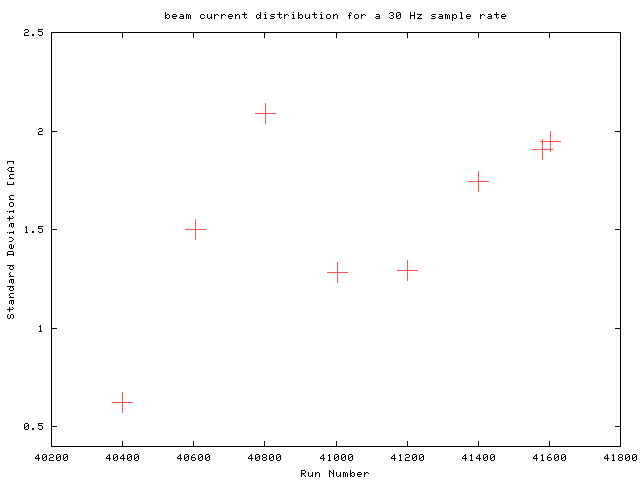The accuracy of the measurement of charge asymmetry is limited by statistical fluctuations of the beam current. That these fluctuations indeed behave statistical and scale with the inverse square root of the sampling time has already been shown in a report (postscript) on the 98 data.
A number of equally distributed runs of the Q2=0.5 period have been analyzed for beam current noise. For this purpose The beam current (I) was determined for each helicity scaler read, i.e. with a rate of 30 Hz. To be less sensitive to long term drifts the difference between consecutive readings Ii-Ii-1 was sampled. The standard deviation (sigma) for the distributions vs run number is plotted below. Furthermore the distributions are histogrammed in units of sigma and fitted with a Gaussian of width 1. Generally the distributions are less Gaussian (worse chi square) than in 98, but this might simply be due to the higher sampling frequency.
The sigma of the distributions varies considerably but seems to be in general less than 2.5 nA. The accuracy of a charge measurement in 100 seconds is thus at least 2.5/sqrt(30*100) = 0.046 nA.
The error in charge asymmetry is equal to the relative error in
charge measurement (according to error propagation) and thus
for a 100 second measurement at 100 nA better than 0.046/100 =
4.6e-4. This is about the same resolution as in 98.
